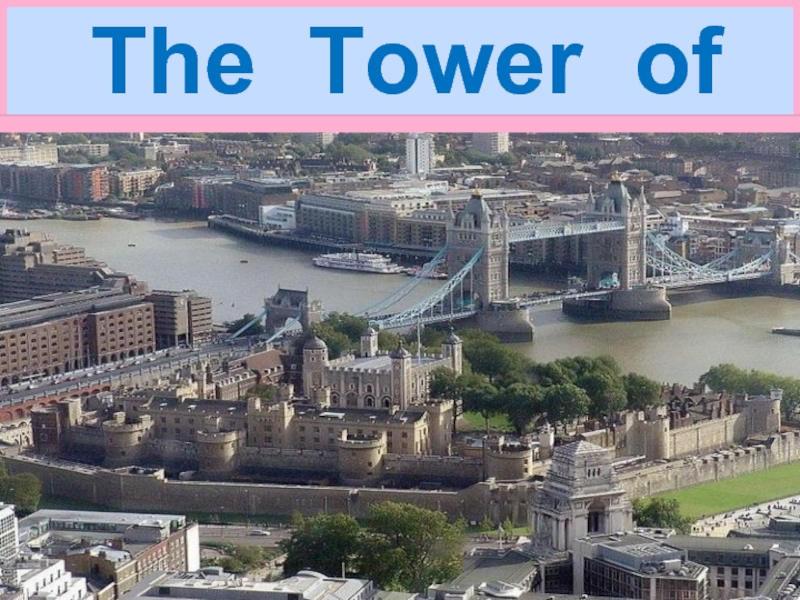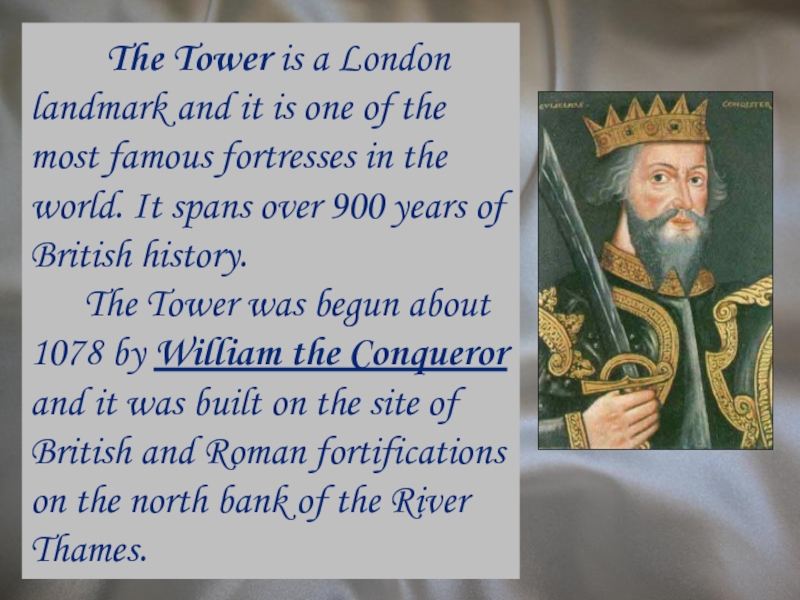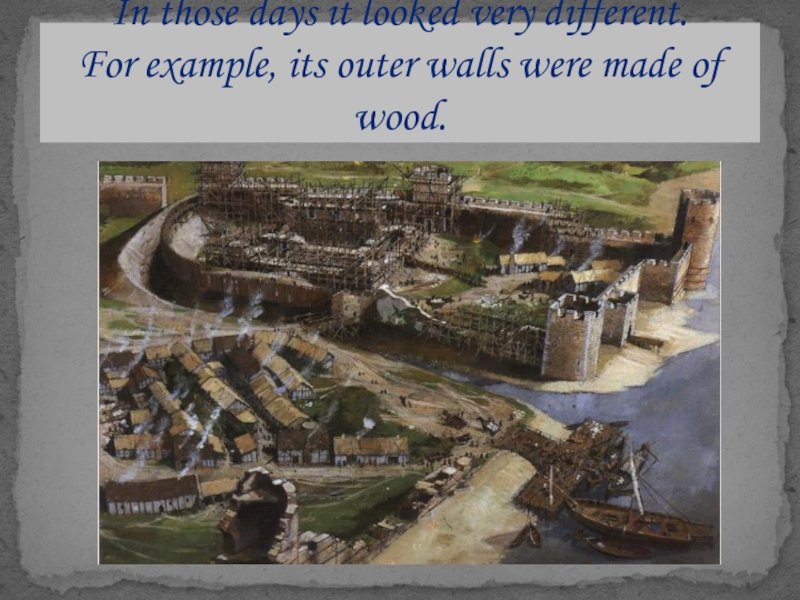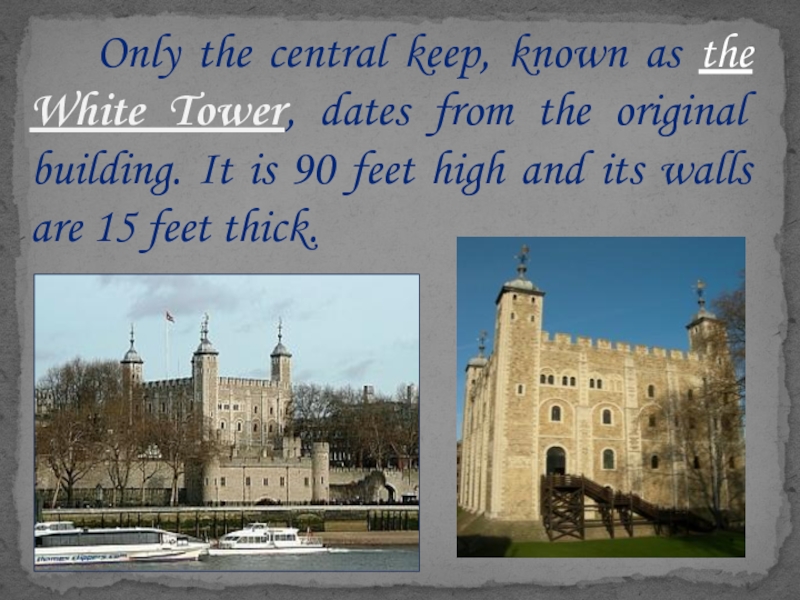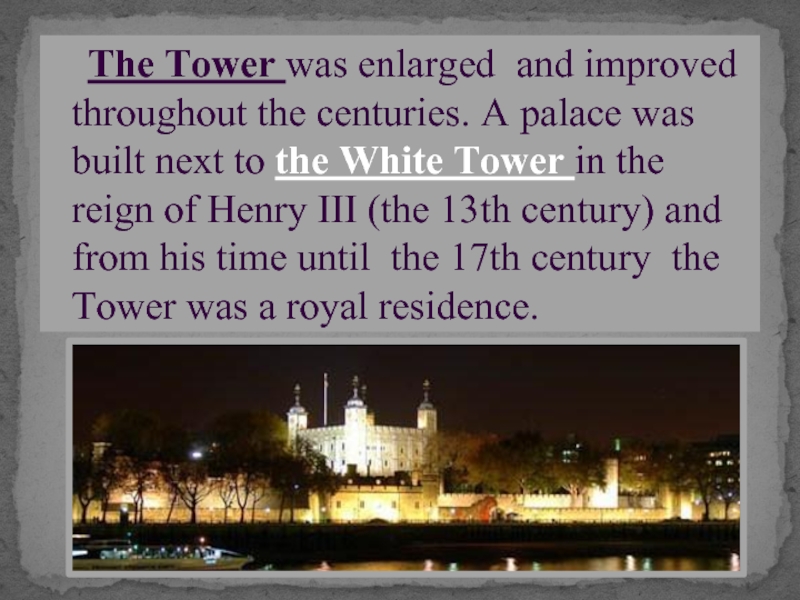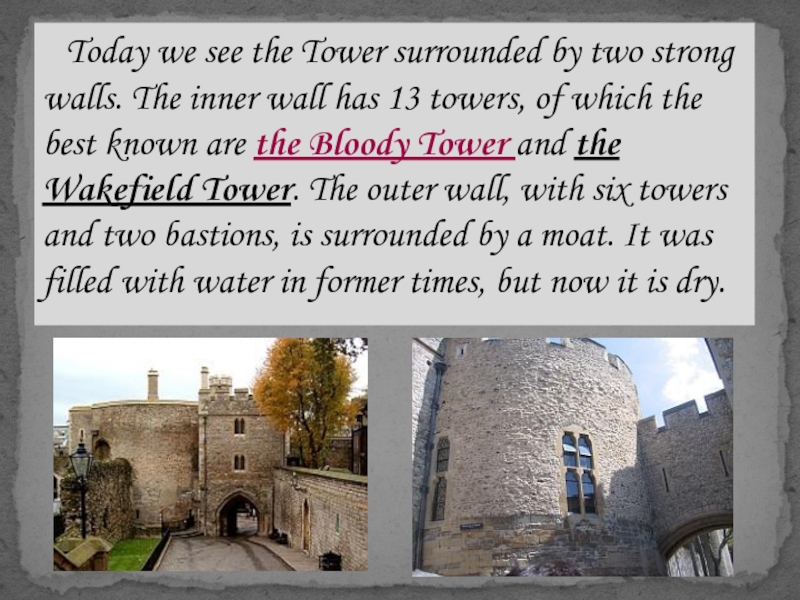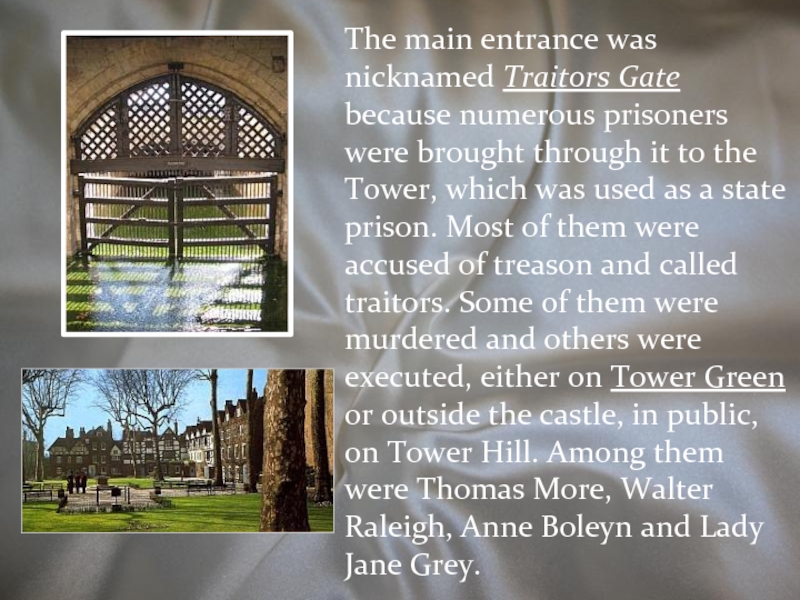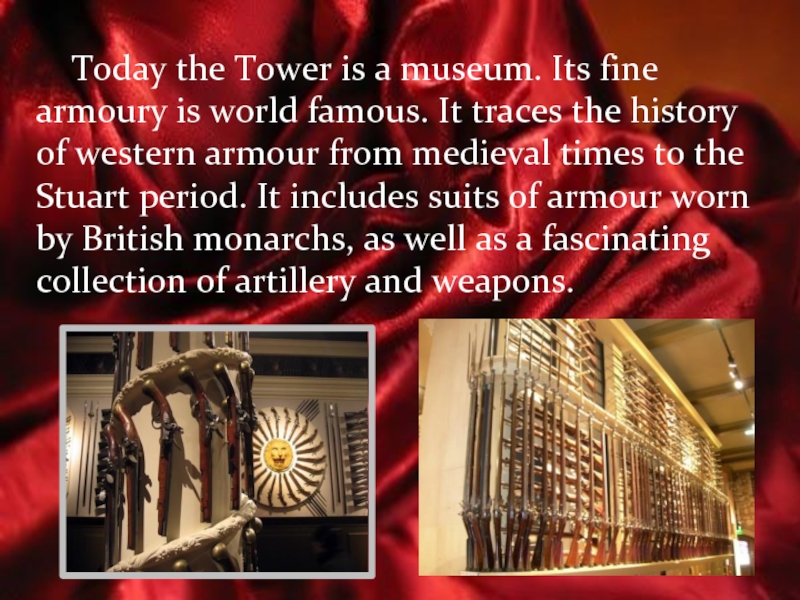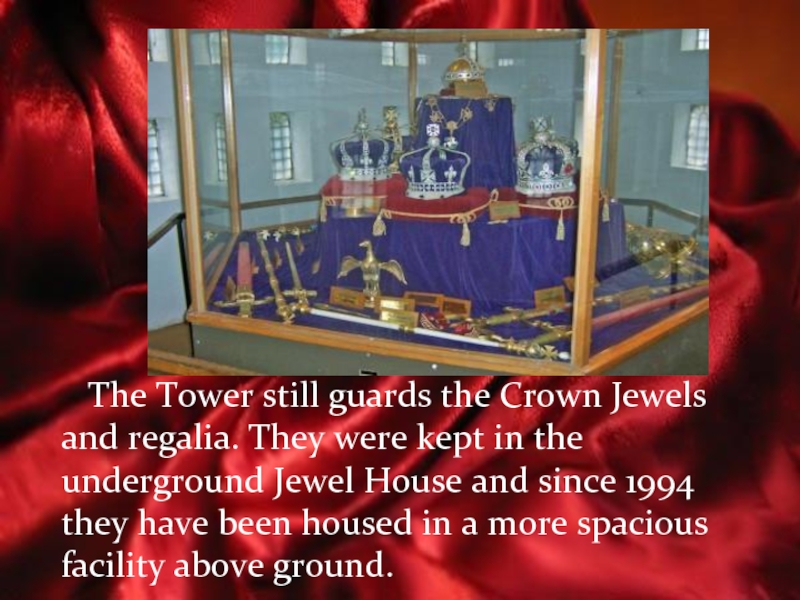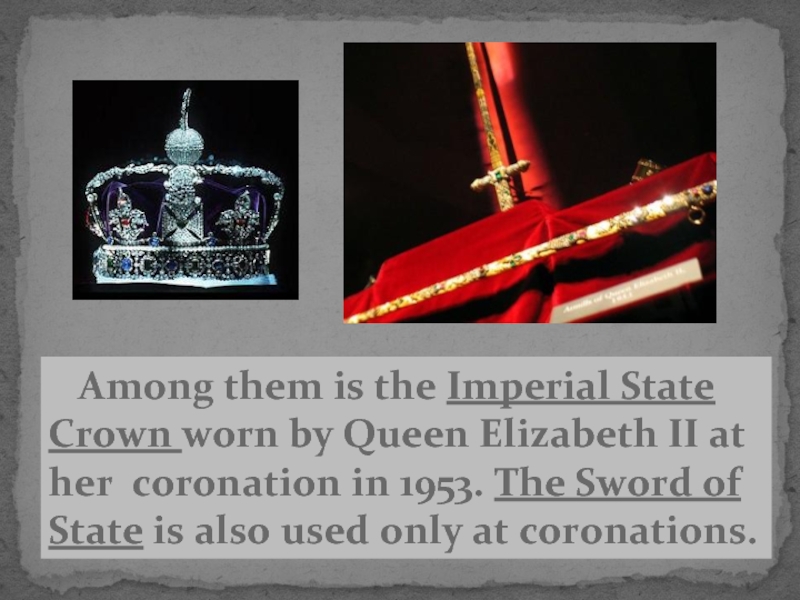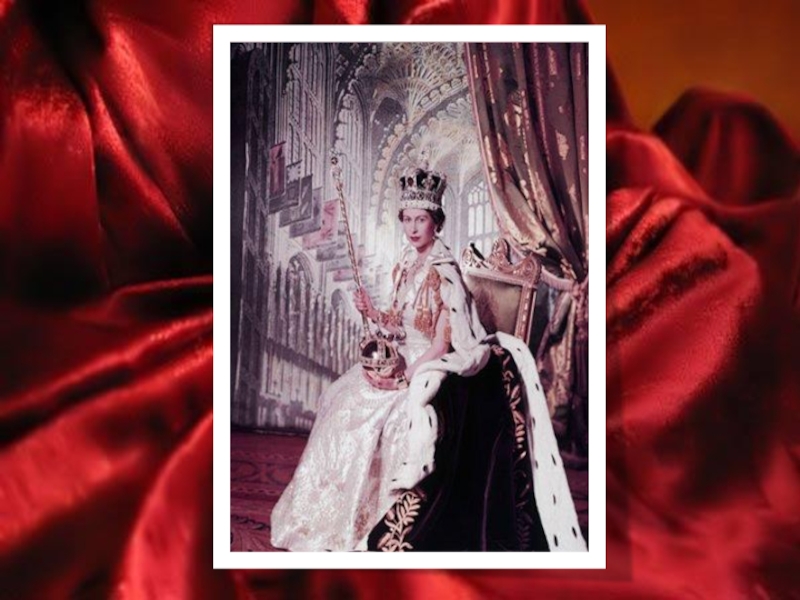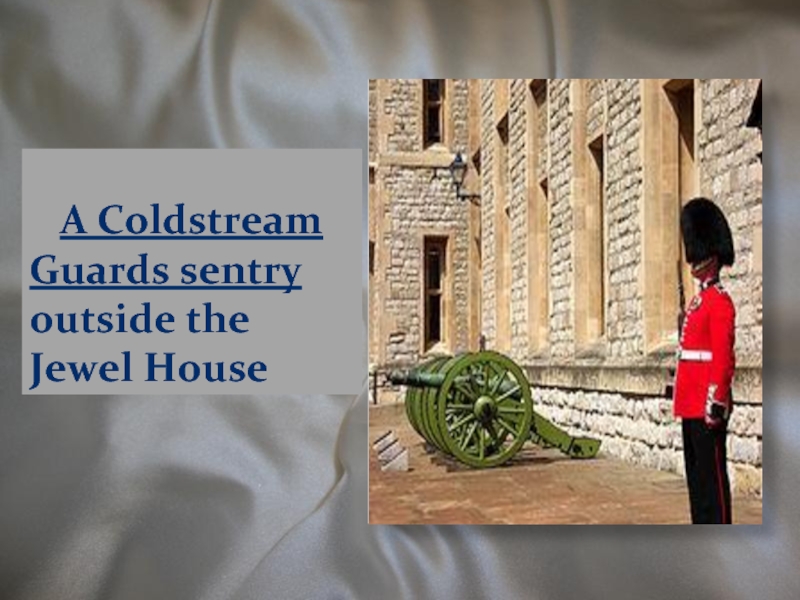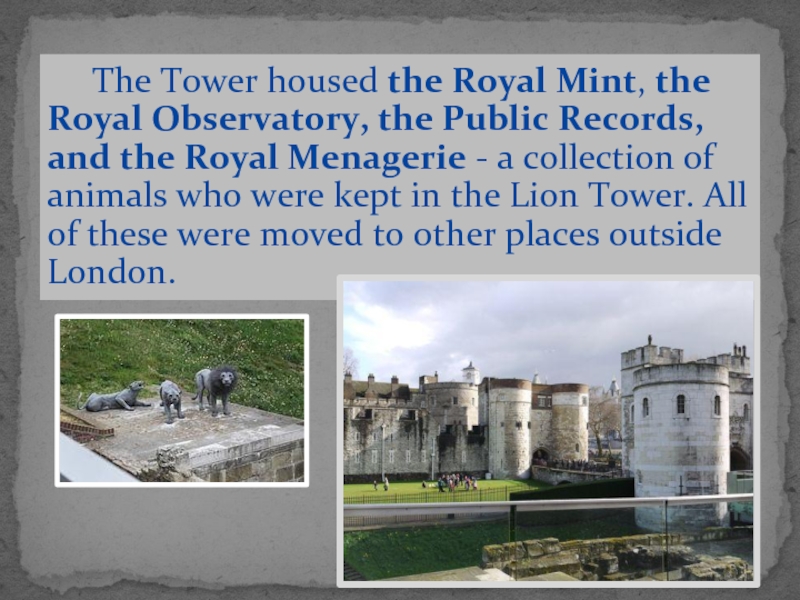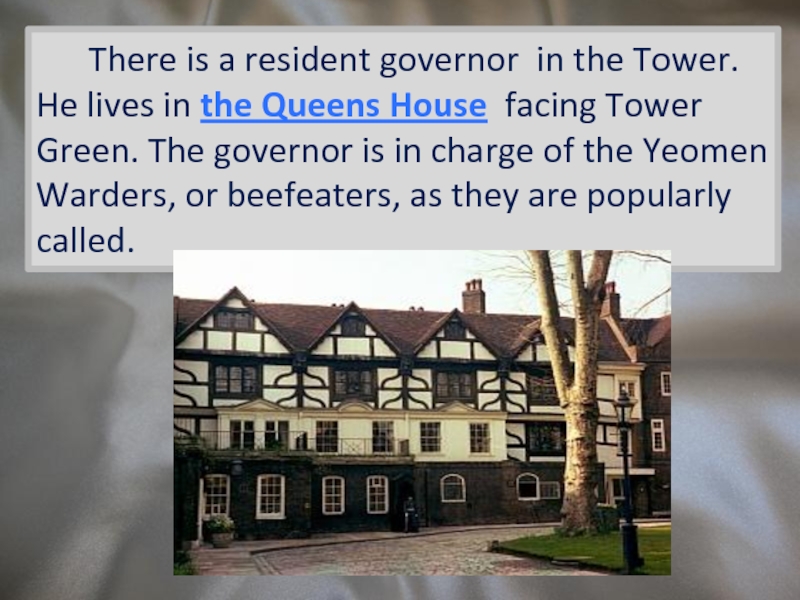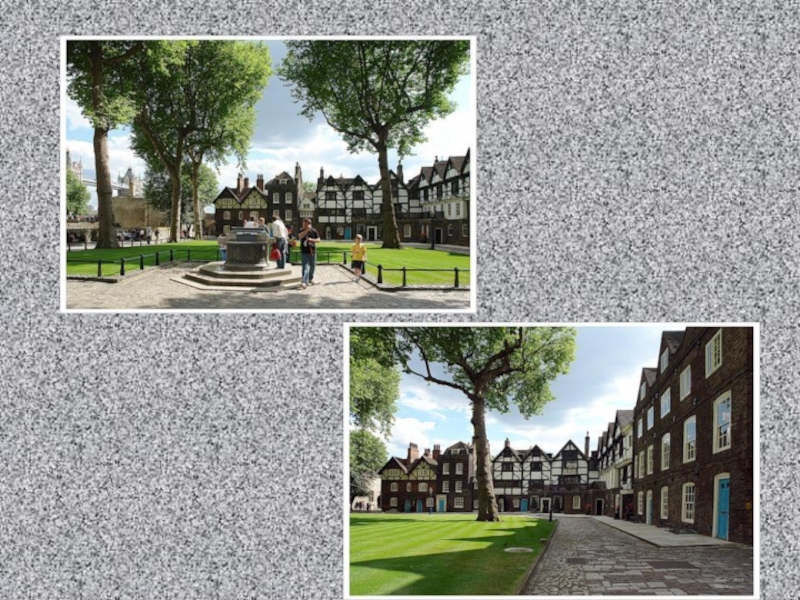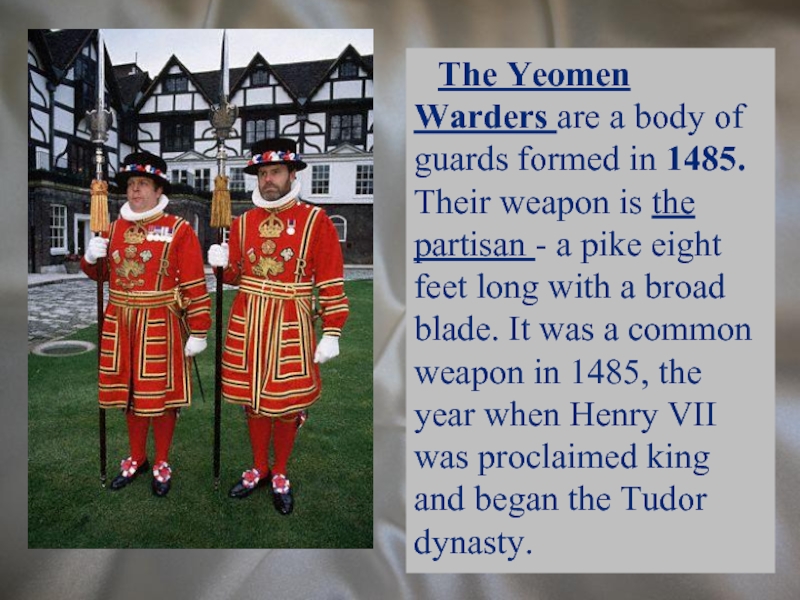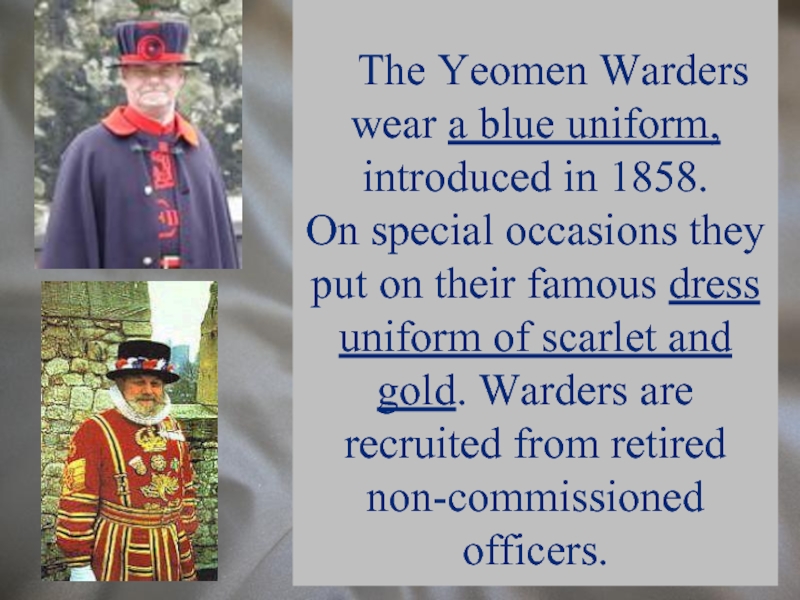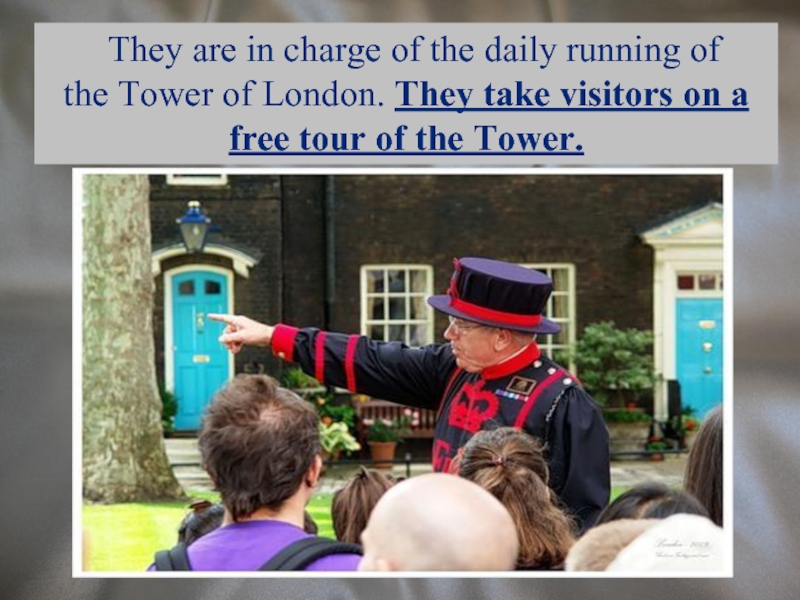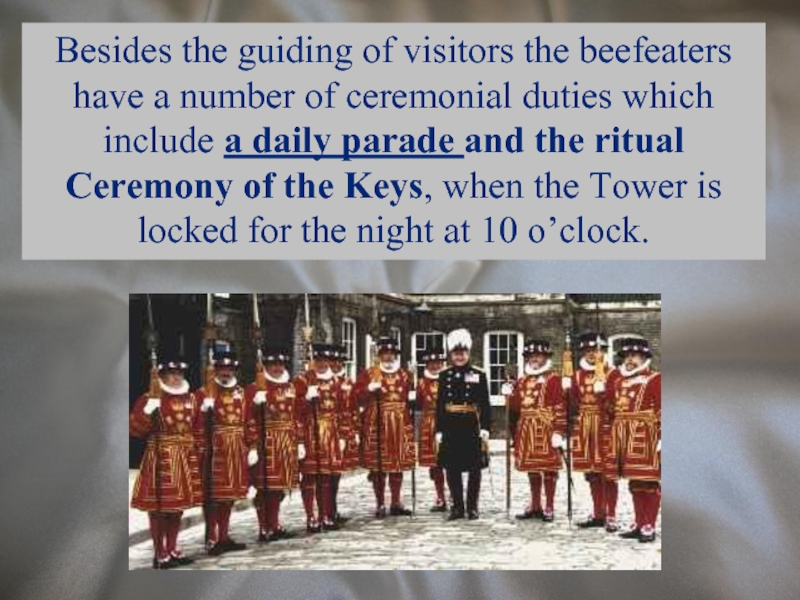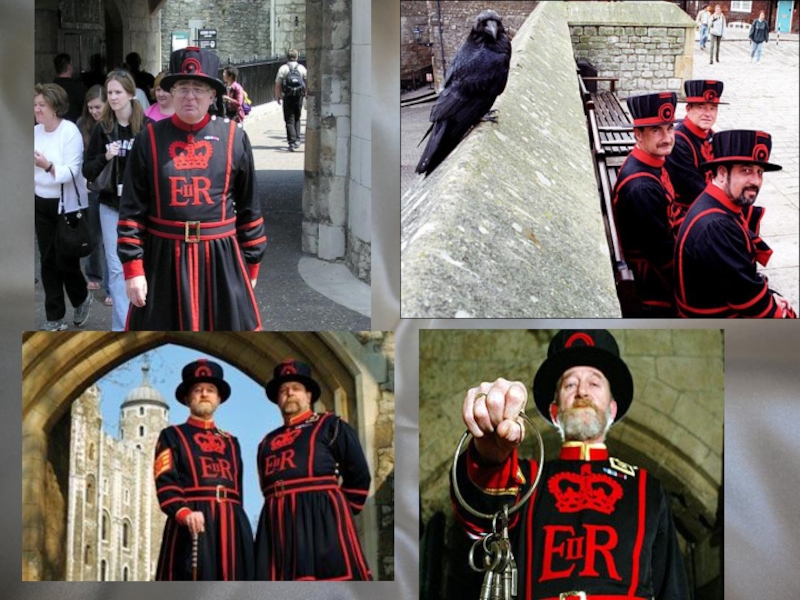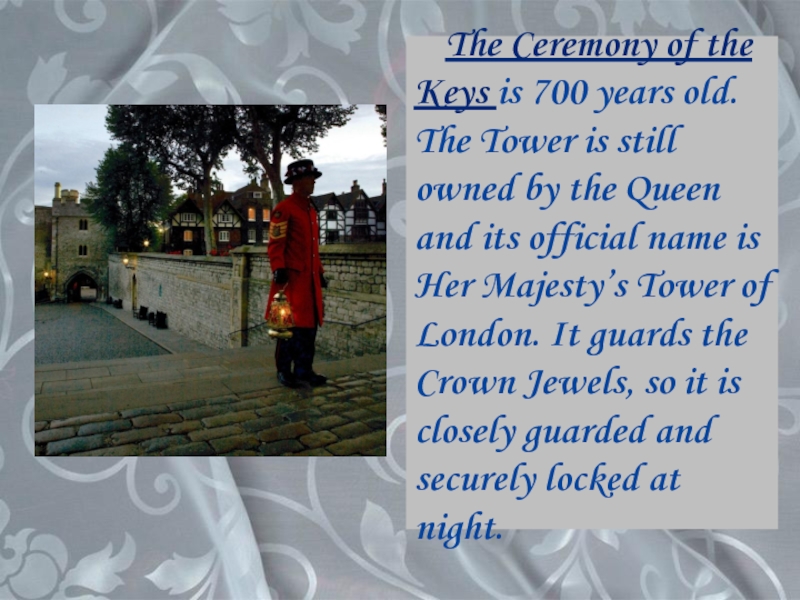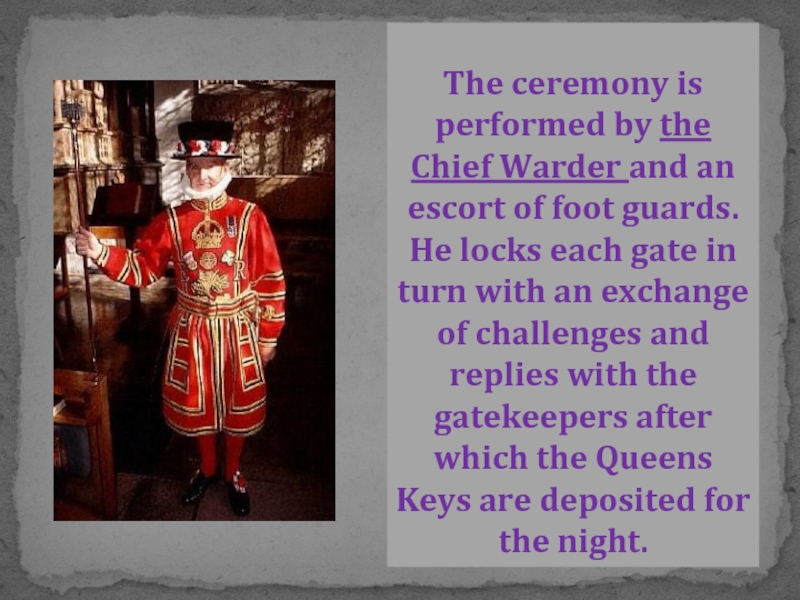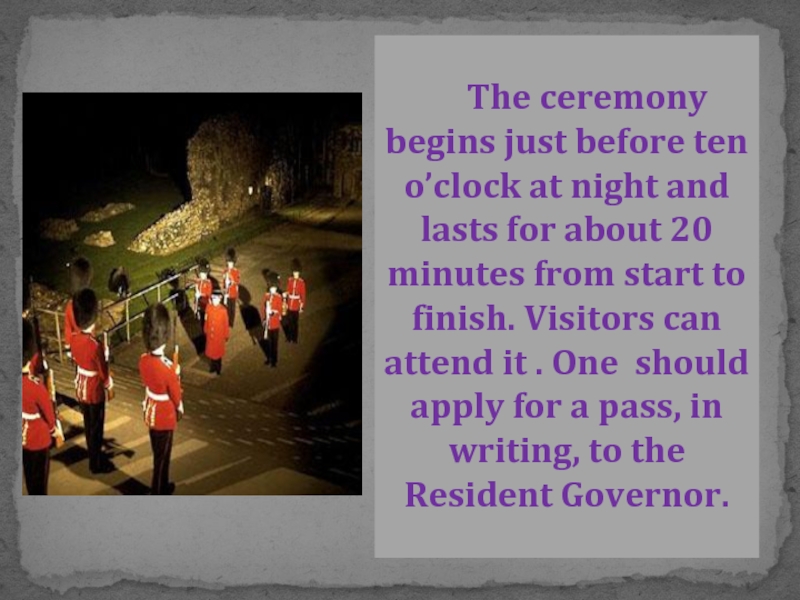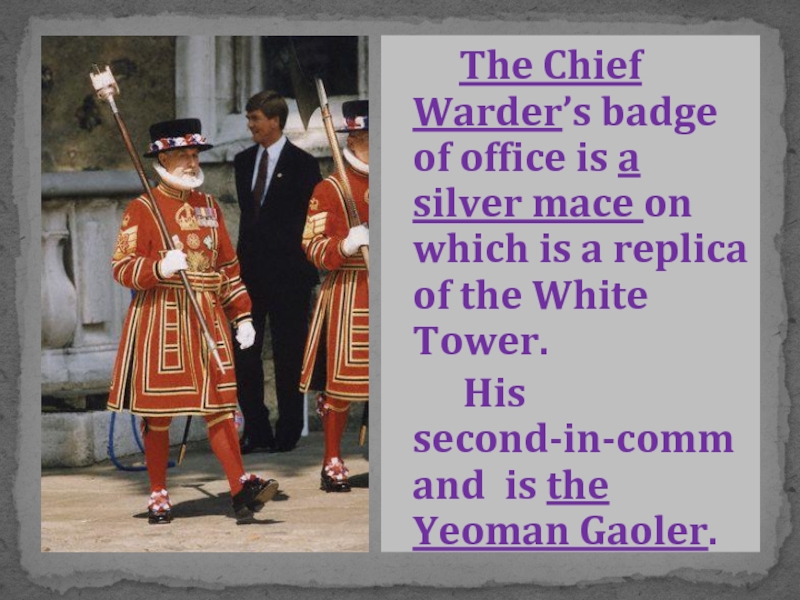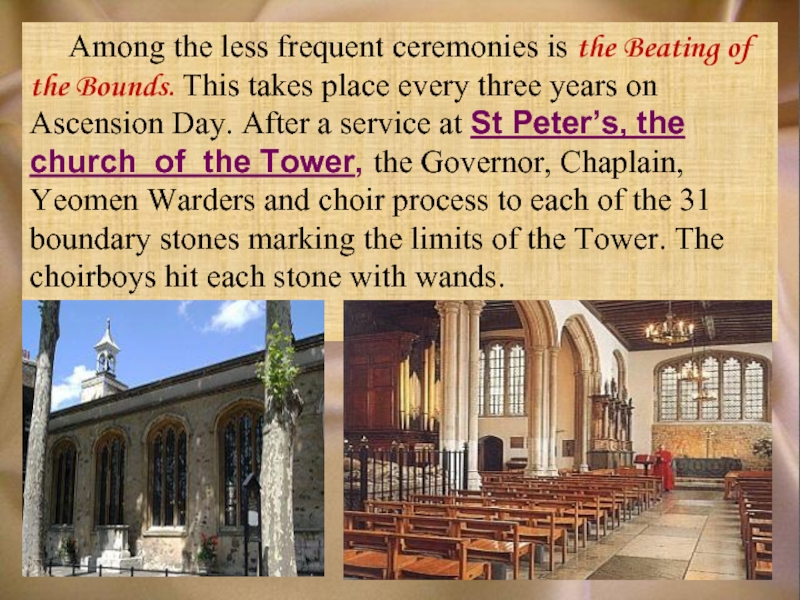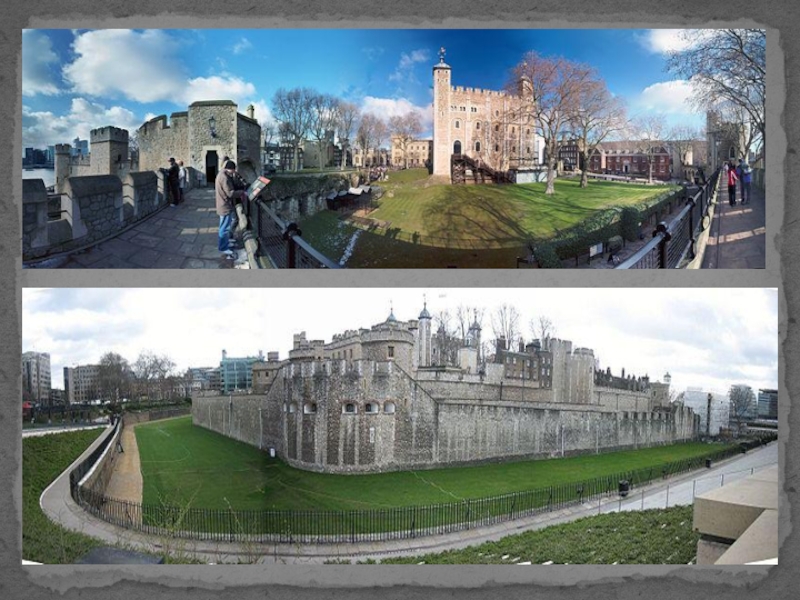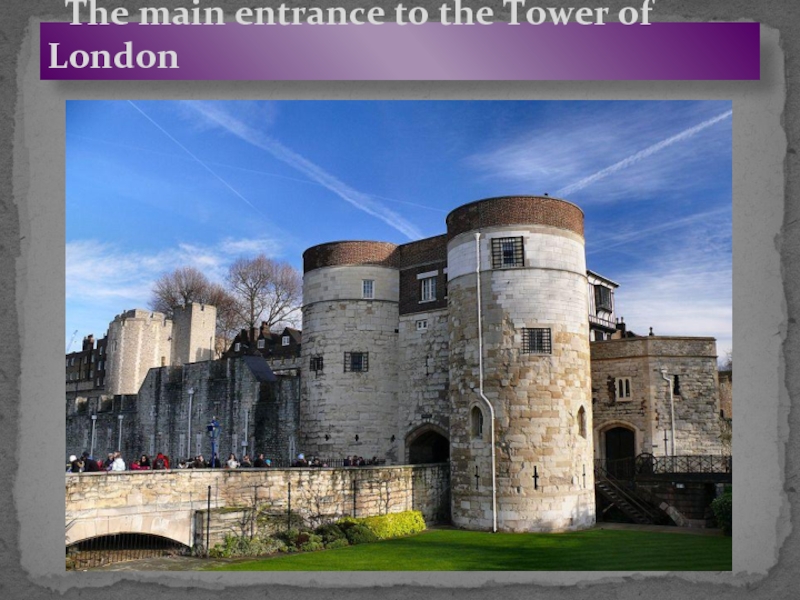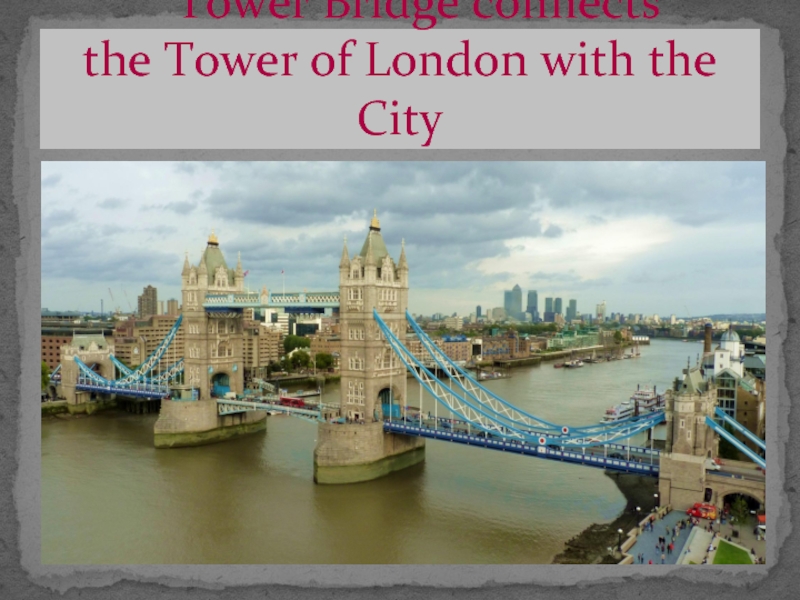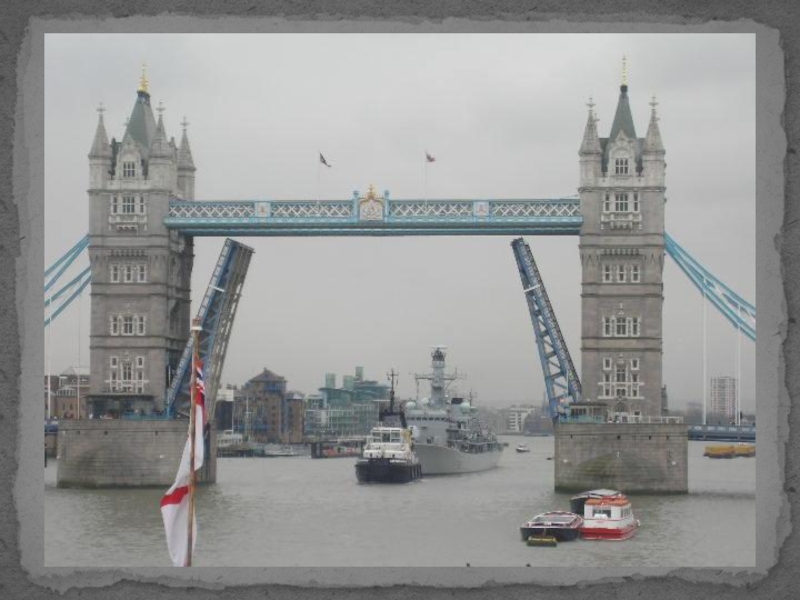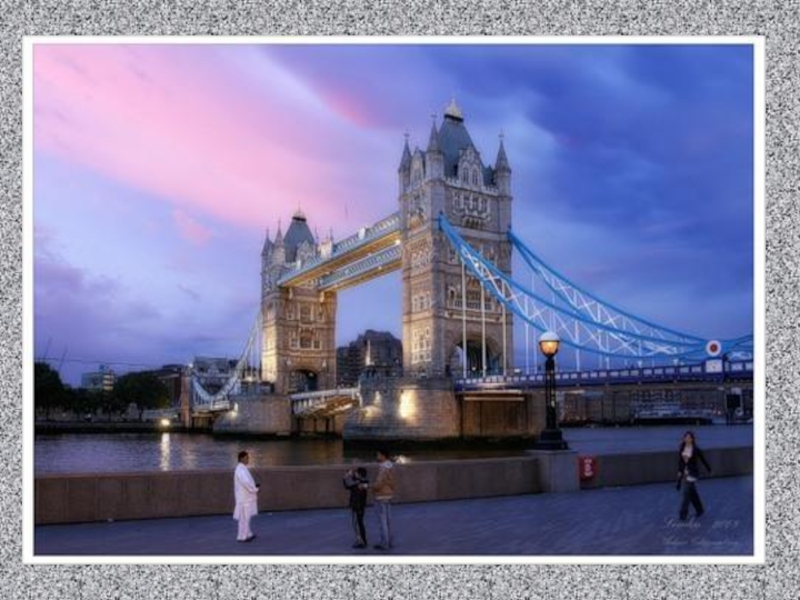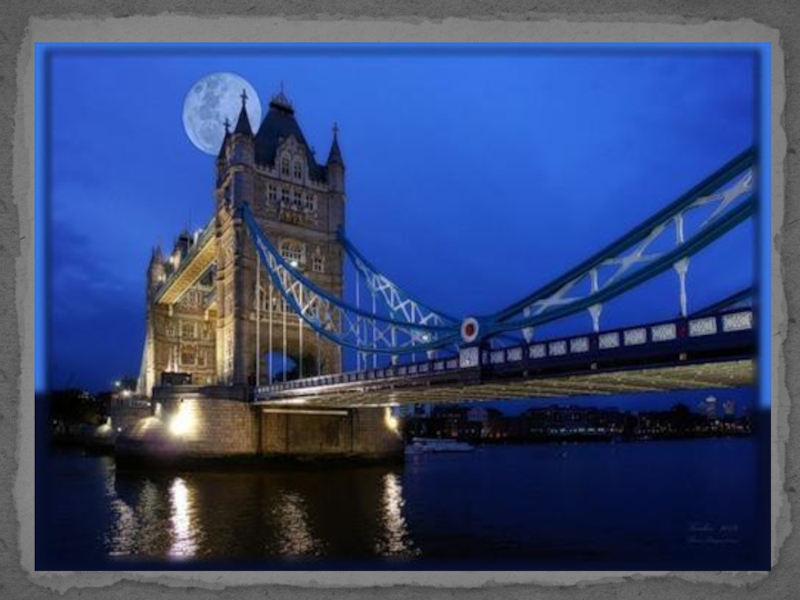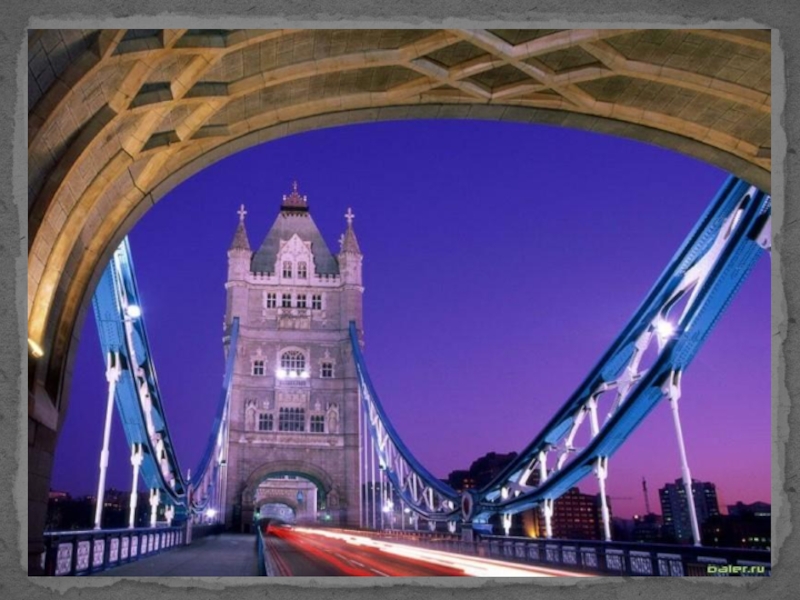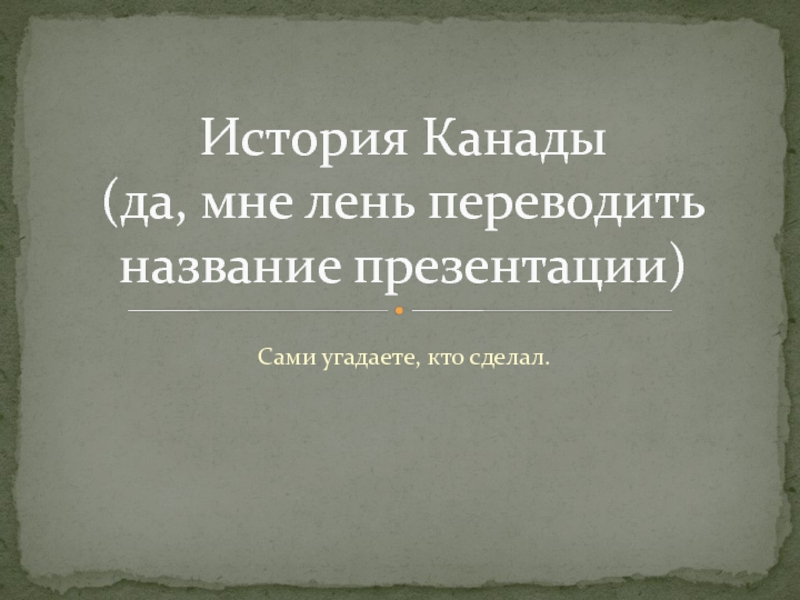- Главная
- Разное
- Дизайн
- Бизнес и предпринимательство
- Аналитика
- Образование
- Развлечения
- Красота и здоровье
- Финансы
- Государство
- Путешествия
- Спорт
- Недвижимость
- Армия
- Графика
- Культурология
- Еда и кулинария
- Лингвистика
- Английский язык
- Астрономия
- Алгебра
- Биология
- География
- Детские презентации
- Информатика
- История
- Литература
- Маркетинг
- Математика
- Медицина
- Менеджмент
- Музыка
- МХК
- Немецкий язык
- ОБЖ
- Обществознание
- Окружающий мир
- Педагогика
- Русский язык
- Технология
- Физика
- Философия
- Химия
- Шаблоны, картинки для презентаций
- Экология
- Экономика
- Юриспруденция
The Tower of London презентация
Содержание
- 1. The Tower of London
- 3. In those days it looked very different.
- 4. Only the central keep, known
- 5. The Tower was enlarged
- 6. Today we see the Tower
- 8. The main entrance was nicknamed Traitors Gate
- 9. Today the
- 10. The Tower still guards the
- 11. Among them
- 13. A Coldstream Guards sentry outside the Jewel House
- 14. The Tower housed the
- 15. There is a resident
- 17. The Yeomen Warders are a
- 18. The Yeomen
- 19. They are in charge of the
- 20. Besides the guiding of visitors the beefeaters
- 22. The Ceremony of the Keys
- 23. The ceremony is performed
- 24. The ceremony
- 25. The Chief Warder’s
- 26. On State occasions he
- 27. Among
- 30. The main entrance to the Tower of London
- 31. Tower Bridge connects the
Слайд 2 The Tower is a
London landmark and it is one of the most famous fortresses in the world. It spans over 900 years of British history.
The Tower was begun about 1078 by William the Conqueror and it was built on the site of British and Roman fortifications on the north bank of the River Thames.
The Tower was begun about 1078 by William the Conqueror and it was built on the site of British and Roman fortifications on the north bank of the River Thames.
Слайд 4 Only the central keep, known as the White Tower,
dates from the original building. It is 90 feet high and its walls are 15 feet thick.
Слайд 5 The Tower was enlarged and improved throughout the
centuries. A palace was built next to the White Tower in the reign of Henry III (the 13th century) and from his time until the 17th century the Tower was a royal residence.
Слайд 6 Today we see the Tower surrounded by two strong
walls. The inner wall has 13 towers, of which the best known are the Bloody Tower and the Wakefield Tower. The outer wall, with six towers and two bastions, is surrounded by a moat. It was filled with water in former times, but now it is dry.
Слайд 8The main entrance was nicknamed Traitors Gate because numerous prisoners were
brought through it to the Tower, which was used as a state prison. Most of them were accused of treason and called traitors. Some of them were murdered and others were executed, either on Tower Green or outside the castle, in public, on Tower Hill. Among them were Thomas More, Walter Raleigh, Anne Boleyn and Lady Jane Grey.
Слайд 9
Today the Tower is a museum. Its
fine armoury is world famous. It traces the history of western armour from medieval times to the Stuart period. It includes suits of armour worn by British monarchs, as well as a fascinating collection of artillery and weapons.
Слайд 10 The Tower still guards the Crown Jewels and regalia.
They were kept in the underground Jewel House and since 1994 they have been housed in a more spacious facility above ground.
Слайд 11
Among them is the Imperial State Crown
worn by Queen Elizabeth II at her coronation in 1953. The Sword of State is also used only at coronations.
Слайд 14 The Tower housed the Royal Mint, the Royal
Observatory, the Public Records, and the Royal Menagerie - a collection of animals who were kept in the Lion Tower. All of these were moved to other places outside London.
Слайд 15 There is a resident governor in the Tower.
He lives in the Queens House facing Tower Green. The governor is in charge of the Yeomen Warders, or beefeaters, as they are popularly called.
Слайд 17 The Yeomen Warders are a body of guards formed
in 1485. Their weapon is the partisan - a pike eight feet long with a broad blade. It was a common weapon in 1485, the year when Henry VII was proclaimed king and began the Tudor dynasty.
Слайд 18
The Yeomen Warders wear a blue uniform,
introduced in 1858. On special occasions they put on their famous dress uniform of scarlet and gold. Warders are recruited from retired non-commissioned officers.
Слайд 19 They are in charge of the daily running of
the Tower of London. They take visitors on a free tour of the Tower.
Слайд 20Besides the guiding of visitors the beefeaters have a number of
ceremonial duties which include a daily parade and the ritual Ceremony of the Keys, when the Tower is locked for the night at 10 o’clock.
Слайд 22 The Ceremony of the Keys is 700 years old.
The Tower is still owned by the Queen and its official name is Her Majesty’s Tower of London. It guards the Crown Jewels, so it is closely guarded and securely locked at night.
Слайд 23
The ceremony is performed by the Chief Warder and
an escort of foot guards. He locks each gate in turn with an exchange of challenges and replies with the gatekeepers after which the Queens Keys are deposited for the night.
Слайд 24
The ceremony begins just before ten
o’clock at night and lasts for about 20 minutes from start to finish. Visitors can attend it . One should apply for a pass, in writing, to the Resident Governor.
Слайд 25 The Chief Warder’s badge of office is
a silver mace on which is a replica of the White Tower.
His second-in-command is the Yeoman Gaoler.
His second-in-command is the Yeoman Gaoler.
Слайд 26 On State occasions he carries a ceremonial axe
which is over 400 years old. It was introduced when the Gaoler escorted prisoners from the Tower to their trials at Westminster.
Слайд 27
Among the less frequent ceremonies is
the Beating of the Bounds. This takes place every three years on Ascension Day. After a service at St Peter’s, the church of the Tower, the Governor, Chaplain, Yeomen Warders and choir process to each of the 31 boundary stones marking the limits of the Tower. The choirboys hit each stone with wands.
Слайд 28
The ravens, with their clipped wings, are another famous
sight. Legend has it that without them the Tower will fall and the Kingdom with it. The ravens are still there. So is the Kingdom.
